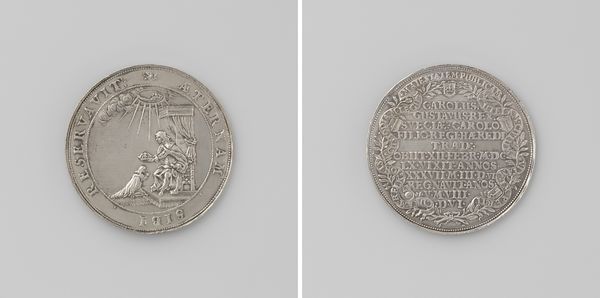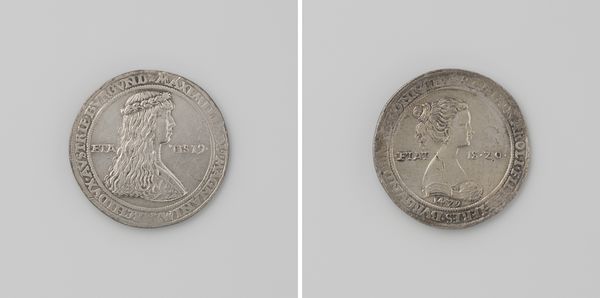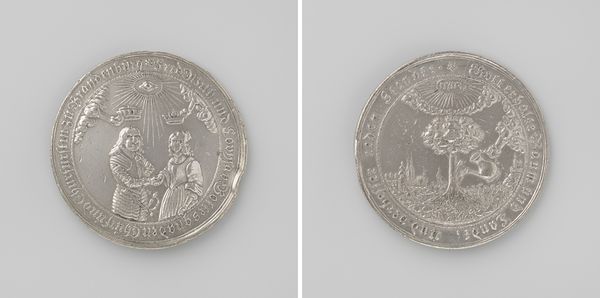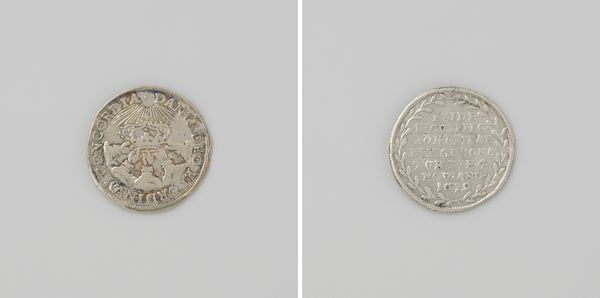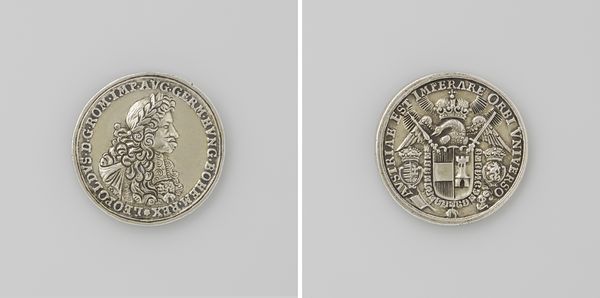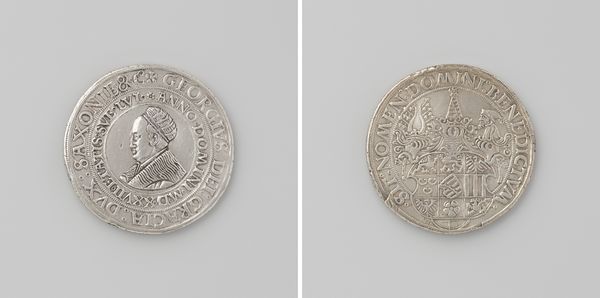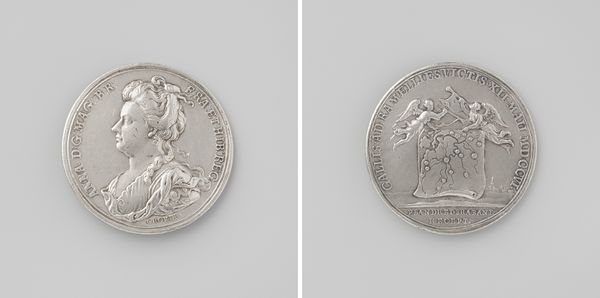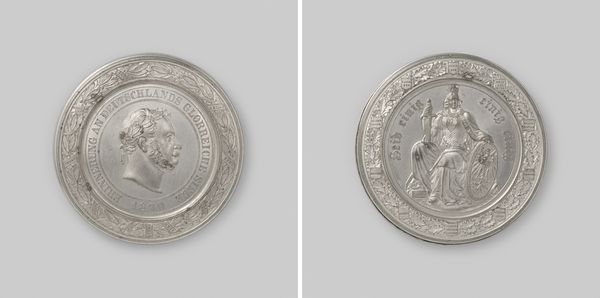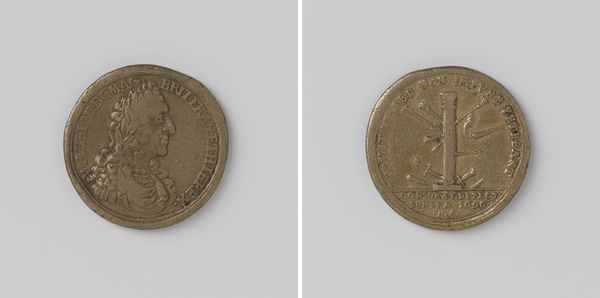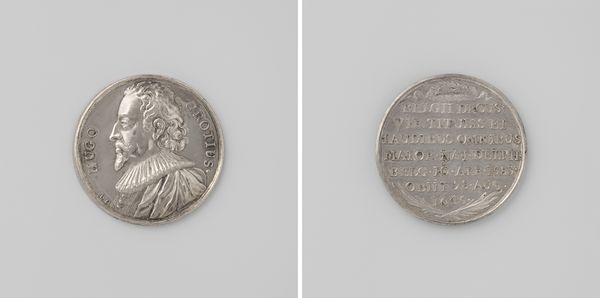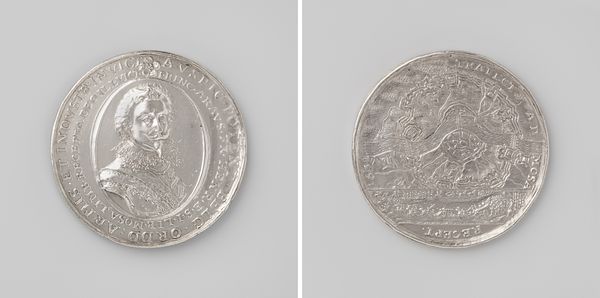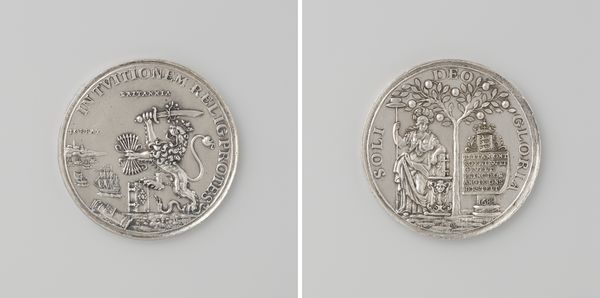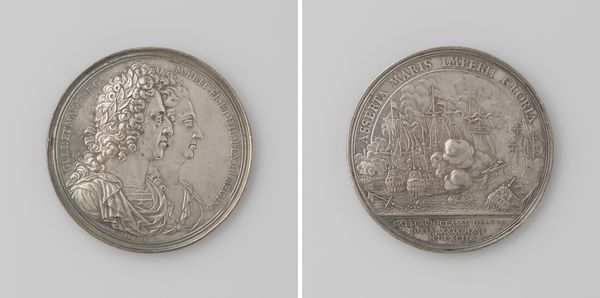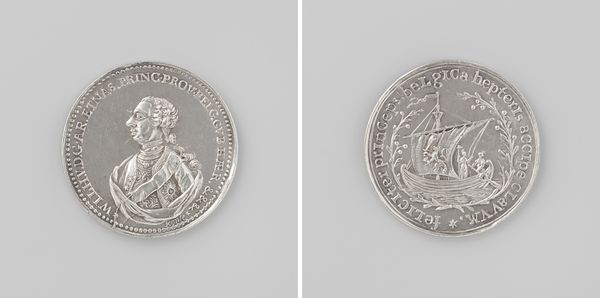
metal, engraving
#
portrait
#
baroque
#
metal
#
history-painting
#
engraving
Dimensions: diameter 2.6 cm, weight 80 gr
Copyright: Rijks Museum: Open Domain
Curator: This engraved metal piece, dating from 1696, is entitled "Nationaal verbond ter bescherming van Willem III." Made by Nicolas Chevalier, it depicts a pivotal moment in Dutch history. What are your initial thoughts? Editor: It looks weighty, doesn't it? Solid. Almost severe in its depiction. Despite the miniature figures, there’s a gravity to the scene that suggests high stakes. The starkness contrasts with what I usually associate with baroque flourishes. Curator: Absolutely. The choice of metal underscores its purpose: commemoration and perhaps a stern warning. Let’s consider the context: William III's reign was fraught with challenges. This medal embodies the very specific, perhaps exclusionary, political and social energies. This bond for the protection of Willem is against what—a fear of absolutist Catholic power from France? The inscription hints at the importance of alliance. Editor: It’s striking how propaganda found its way into even seemingly small objects. The iconography is definitely purposeful. It reinforces a powerful, almost aggressive narrative of Dutch sovereignty and security. The reverse side shows a strong symbolic gesture, four crests joined together with a tie or ribbon, implying four important parties working toward a unified purpose. I also appreciate its stark quality. Is the depiction on the coin excluding non-protestants? Curator: Certainly, it’s a one-sided story, designed to solidify support. The medal broadcasts the need for a protected future, for maintaining an environment friendly to globalist commerce and perhaps the future of monarchy. And considering that the creation and distribution of medals like these would typically have had strong state support. This kind of distribution of propaganda could even impact perceptions of social mobility. Editor: Yes, the intersection of the monarchy's message and the perception of state legitimacy. Do you feel that this specific type of approach still permeates today's cultural understanding? Is history written in a similar way? Curator: I think objects like this remind us that the 'truths' we encounter in museums are just as meticulously constructed and politically motivated as any contemporary media. Considering things like media literacy, especially on an intersectional scale, helps frame a better, fuller historical truth, too. Editor: Food for thought. And, I'm left contemplating the impact these types of images would have in shaping perspectives then, and their subtle echoes still today.
Comments
No comments
Be the first to comment and join the conversation on the ultimate creative platform.
